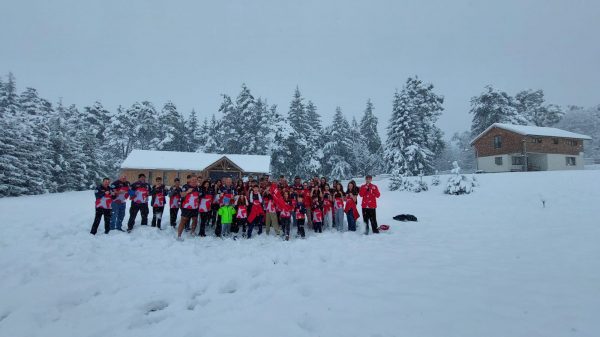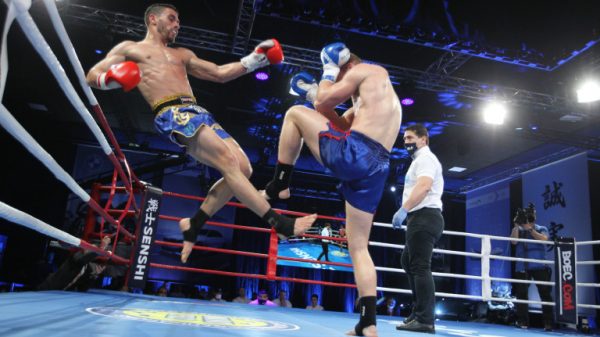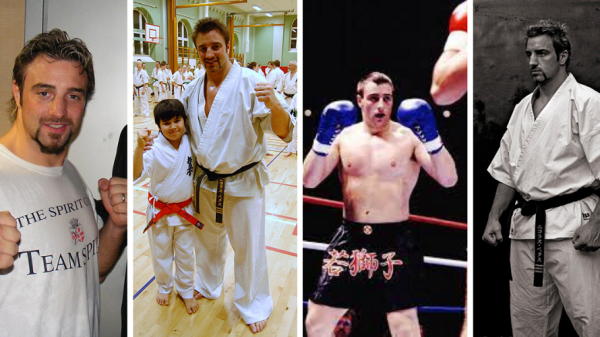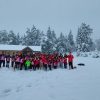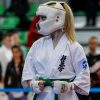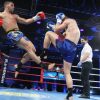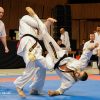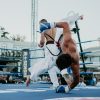Biography of Masutatsu Oyama
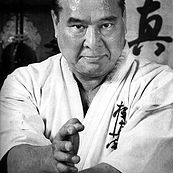 Masutatsu Oyama was born as Choi Young-Eui (최영의) in Gimje, South Korea, during the Japanese occupation in July 1923. At a young age, he was sent to Manchuria to live on his sister’s farm. Oyama began studying martial arts at the age of 9 from a Korean seasonal worker who was working on the farm. His name was Lee and Oyama said he was his very first teacher. The story of the young Oyama’s life has been sensationalized in manga and movies so the line between fiction and facts has become obscure.
Masutatsu Oyama was born as Choi Young-Eui (최영의) in Gimje, South Korea, during the Japanese occupation in July 1923. At a young age, he was sent to Manchuria to live on his sister’s farm. Oyama began studying martial arts at the age of 9 from a Korean seasonal worker who was working on the farm. His name was Lee and Oyama said he was his very first teacher. The story of the young Oyama’s life has been sensationalized in manga and movies so the line between fiction and facts has become obscure.
In March 1938, Oyama left for Japan following his brother who enrolled in the Yamanashi Aviation School Imperial Japanese Army aviation school. Sometime during his time in Japan, Choi Young-Eui chose his Japanese name, Oyama Masutatsu (大山 倍達), which is a transliteration of ‘Baedal’ (倍達). ‘Baedal’ was an ancient Korean kingdom known in Japan during Oyama’s time as “Ancient Joseon”. ‘Masutatsu’ can also be pronounced as ‘baitatsu’ in Japanese. Oyama was inspired to go to Japan by General Kanji Ishihara who was against the invasion of Asian neighbors (as a consequence, he was ostracized by higher ranks of the Japanese Army), to carve out his future in the heart of the Empire of Japan.
One story of Oyama’s youth describes how Lee gave young Oyama a seed which he was to plant; when it sprouted, he was to jump over it one hundred times every day. As the seed grew and became a plant, Oyama later said, “I was able to jump between walls back and forth easily.” The writer, Ikki Kajiwara, and the publisher of the comics based the story on the life experience Oyama told them about – thus the title became “Karate Baka Ichidai” (Karate Fanatic).
Oyama aspired to serve the Imperial Army during the war. He wrote a letter to the highest-ranking officers with the blood from his fingers to apply for the Kamikaze pilot. Because it was the elite course he was rejected the first few times because of his background, however, later Oyama recalls, “After the general saw I wrote with my own blood he knew I was ready to serve. The next week I was supposed to leave as Kamikaze, never returning to my home country.” However, on the day of his mission, his airplane malfunctioned.
He later said in an interview for a TV program, “I had breakfast with my comrades ready to serve our country. In the evening when I returned for supper, the chairs were empty. There were no words to describe what I felt but I know I was given a chance to do something.” One of the last TV programs Oyama taped was for Fuji Network (Japan) for a program called ‘Itsu Mitemo Haranbanjyo’ (Always Stormy and Full of Drama).
In 1963, Oyama wrote “What is Karate” which became a best seller in the US and sold a million copies all over the world. It is still considered the “Bible of Karate”. It was translated into Hungarian, French, and English.
Post–World War II
In 1945 after the war ended, Oyama left the aviation school. He founded “Eiwa Karate Research Center” in Suginami ward but closed it quickly because “I soon realized that I was an unwanted Korean. Nobody would rent me a room.”[2] He finally found a place to live at in Tokyo. This is where he met his future wife whose mother ran a dormitory for university students.
In 1946, Oyama enrolled in Waseda University School of Education to study sports science. Wanting the best in instruction, he contacted the Shotokan dojo (Karate school) operated by Gigō Funakoshi, the second son of karate master and Shotokan founder Gichin Funakoshi. He became a student and began his lifelong career in Karate. Feeling like a foreigner in a strange land, he remained isolated and trained in solitude.
Oyama attended Takushoku University in Tokyo and was accepted as a student at the dojo of Gichin Funakoshi. He trained with Funakoshi for two years, then studied Gōjū-ryū karate for several years with “So Nei Chu” (소네이쥬, 1907–?), a senior student of the system’s founder, Chojun Miyagi, and was eventually graded to 8th Dan in the system by Gogen Yamaguchi who at that time was the head of Goju-ryu in mainland Japan.
Korea had been officially annexed by Japan since 1910. During World War II (1939–1945) there was much unrest throughout Korea. As South Korea began to fight against North Korea over political ideology, Oyama became increasingly distressed. He recounts, “though I was born and bred in Korea, I had unconsciously made myself liberal; I felt repulsion against the strong feudal system of my fatherland, and that was one of the reasons which made me run away from home to Japan.” He joined a Korean political organization in Japan to strive for the unification of Korea, but soon was being targeted and harassed by the Japanese police. He then consulted with a fellow Korean from the same native province, Mr. Neichu So, who was a Goju Karate expert.
Around the time he also went around Tokyo getting in fights with the U.S. Military Police. He later reminisced those times in a television interview, “Itsumitemo Haran Banjyo” (Nihon Television), “I lost many friends during the war the very morning of their departure as Kamikaze pilots, we had breakfast together and in the evening their seats were empty. After the war ended, I was angry- so I fought as many U.S. Military as I could until my portrait was all over the police station.” At this time, Mr. So suggested that Oyama retreat to a lone mountain for solace train his mind and body. He set out to spend three years on Mt. Minobu in Yamanashi Prefecture, Japan. Oyama built a shack on the side of the mountain. One of his students named Yashiro accompanied him, but after the rigors of this isolated training, with no modern conveniences, the student snuck away one night and left Oyama alone. With only monthly visits from a friend in the town of Tateyama in Chiba Prefecture, the loneliness and harsh training became grueling. Oyama began to doubt his decision, so he sent a letter to the man who suggested the retreat. Mr. So replied with encouragement to remain and suggested that he shave off one eyebrow so that he would not be tempted to come out of the mountain and let anyone see him that way. Oyama remained on the mountain for fourteen months and returned to Tokyo a much stronger and more fierce Karateka.
Oyama gave great credit to reading “The Book of Five Rings” by Miyamoto Musashi – a famous Japanese swordsman, to change his life completely. He recounts this book as being his only reading material during his mountain training years.
He was forced to leave his mountain retreat after his sponsor had stopped supporting him. Months later, after he had won the Karate Section of Japanese National Martial Arts Championships, he was distraught that he had not reached his original goal to train in the mountains for three years, so he went into solitude again, this time on Mt. Kiyosumi in Chiba Prefecture, Japan and he trained there for 18 months.
Founds Kyokushin
In 1953 Oyama opened his own karate dojo, named Oyama Dojo, in Tokyo but continued to travel around Japan and the world giving martial arts demonstrations, including the fighting and killing of live bulls with his bare hands. His dojo was first located outside in an empty lot but eventually moved into a ballet school in 1956. Oyama’s own curriculum soon developed a reputation as a tough, intense, hard hitting but practical style, which was finally named Kyokushin, which means ‘the search for the ultimate truth,’ in a ceremony 1957. He also developed a reputation for being ‘rough’ with his students, often injuring them during training sessions. As the reputation of the dojo grew students were attracted to come to train there from inside and outside Japan and the number of students grew. Many of the eventual senior leaders of today’s various Kyokushin based organizations began training in the style during this time. In 1964 Oyama moved the dojo into the building that would from then on serve as the Kyokushin home dojo and world headquarters. In connection with this he also formally founded the ‘International Karate Organization Kyokushin kaikan’ (commonly abbreviated to IKO or IKOK) to organize the many schools that were by then teaching the kyokushin style. In the same year, his dojo received a challenge from Muay Thai (Thai Boxing) practitioners. Oyama, believing that no other style was comparable to his, accepted the challenge and sent three students (Kenji Kurosaki, Tadashi Nakamura, Noboru Ōsawa) to Thailand who won 2 of the 3 fights, thus redeeming the reputation of his karate style.
After formally establishing Kyokushin-kai, Oyama directed the organization through a period of expansion. Oyama and his staff of hand-picked instructors displayed great ability in marketing the style and gaining new members. Oyama would choose an instructor to open a dojo in another town or city in Japan. The instructor would move to that town and usually demonstrate his karate skills in public places, such as at the civic gymnasium, the local police gym (where many judo students would practice), a local park, or conduct martial arts demonstrations at local festivals or school events. In this way, the instructor would soon gain a few students for his new dojo. After that, word of mouth would spread through the local area until the dojo had a dedicated core of students. Oyama also sent instructors to other countries such as the United States, Netherlands, England, Australia and Brazil to spread Kyokushin in the same way. Oyama also promoted Kyokushin by holding The All-Japan Full Contact Karate Open Championships every year and World Full Contact Karate Open Championships once every four years in which anyone could enter from any style.
As a side note: Oyama also took up Judo so that he would have an understanding of the art’s ground techniques. Masahiko Kimura Judo Legend then introduced Oyama to the Sone Dojo in Nakano, Tokyo, where he trained regularly for four years, eventually gaining his 4th Dan in this discipline.
Public demonstrations
Oyama tested himself in a kumite, a progression of fights, each lasting two minutes, and each after the featured participant wins. Oyama devised the 100-man kumite which he went on to complete three times in a row over the course of three days.
He was also known for fighting bulls bare-handed.
Oyama had many matches with professional wrestlers during his travels through the United States. Oyama said in the 1958 edition of his book What Is Karate that he had just three matches with professional wrestlers plus thirty exhibitions and nine television appearances.
Later years
Later in his life, Oyama suffered from osteoarthritis. Despite his illness, he never gave up training. He was holding demonstrations of his karate, breaking objects.
Oyama wrote over 80 books in Japanese and some were translated to other foreign languages.
Final years
Before dying, Oyama built his Tokyo-based International Karate Organization, Kyokushinkai, into one of the world’s foremost martial arts associations, with branches in more than 120 countries boasting over 10 million registered members. In Japan, books were written by and about him, feature-length films splashed his colorful life across the big screen, and comic books recounted his many adventures.
Oyama died at the age of 70, on April 26, 1994, of lung cancer. He was a non-smoker. His widow Chiyako Oyama, made a trust foundation to honor his life-long work.


